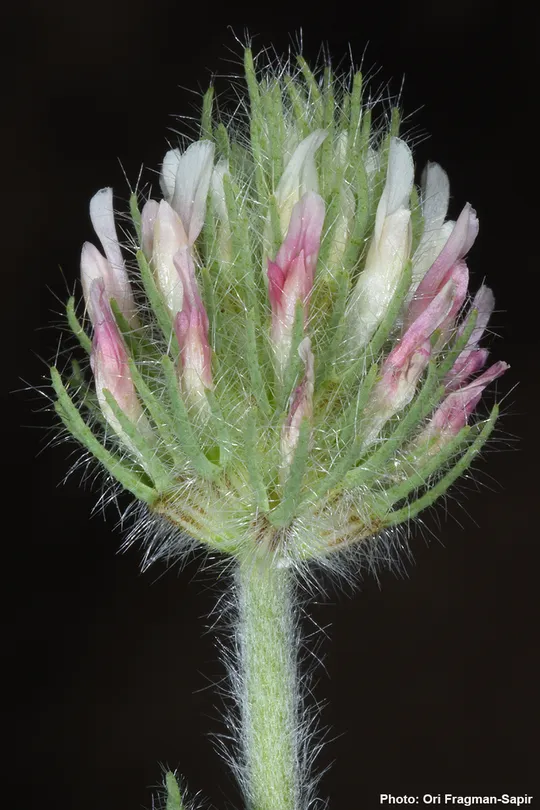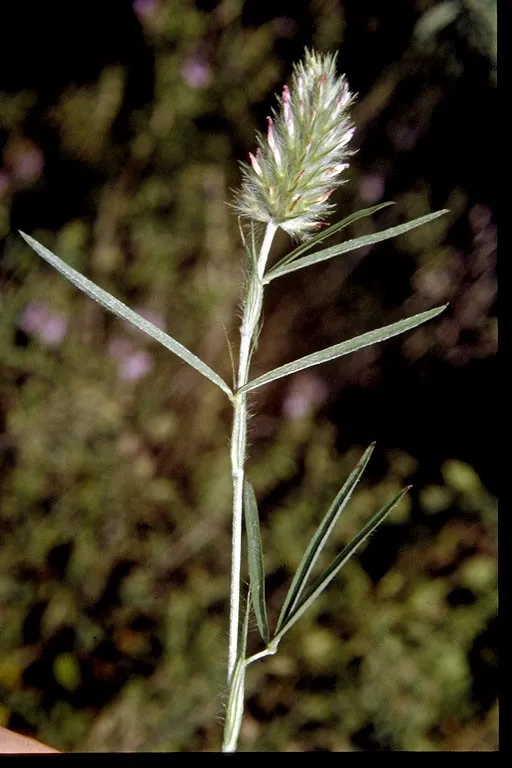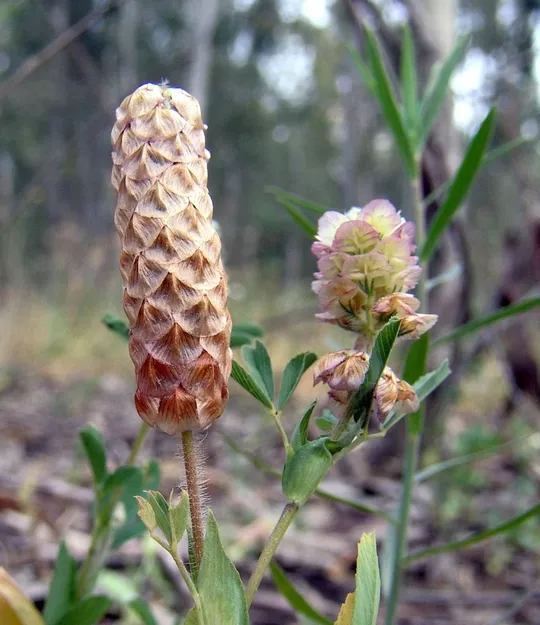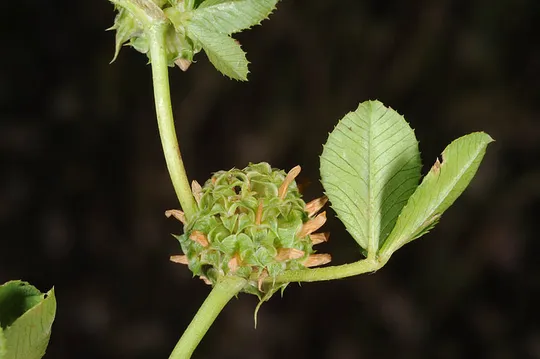Lesser Suckling Trefoil, Slender Trefoil
Trifolium micranthum
Trifolium filiforme is extinct in Israel.
It was collected during the 1920s in the Sharon from the Batih Pond near
Hadera, in Magdi'el and near Petah Tikva and in the Musrara Stream (=Ayalon). There
are six dried specimens from1925-29 collected by Eig and Naftolsky in the
Jerusalem Herbarium. In Danin (2004) reports it from the lower Galilee based on
a source from the literature. In the Flora Palaestina it is noted as doubtful
from the Jordan Valley. Zohari wrote in the Flora Palaestina as early as 1972
that the plant is probably extinct from Israel.
In the
Mediterranean region Trifolium filiforme grows in sunny
areas on fallow fields, sandy areas, margins of wetlands and seasonal pools. In
Central Europe and the Caucasus it grows by road sides and in disturbed habitats
near settlements.
The genus Trifolium is a large genus
that includes about 240 species found on most of the continents except
Australia. The major monograph on the genus was written by two Israeli scientists
(Heller and Zohary, 1984). The largest center of the genus in in the
Mediterranean Basin, and Israel has an extraordinary abundance of the genus: 50
Trifolium
species grow here. Two secondary centers of abundance are located on the
western coast of North America and in the mountains of equatorial Africa. Only
the three species of Trifolium
growing in Israel are perennial, and the remainder are annuals. The perennial
species grow in humid habitats or on high mountains. Trifolium is an example
of many Holarctic genera that have perennial species in the north, and in the
Mediterranean region they have many annual representatives, as an adaptation to
a bi-seasonal climate with long, dry summers.
One of the characteristics
of the genus is a capitulum that usually has numerous sessile flowers on a common
receptacle. The pod is small and oval and usually has a single seed and remains
inside the calyx and develops differently in different sections as a means of
dispersing the inflorescence and/or individual flowers. The dispersal strategy
and its accompanying features is the characteristic that has undergone the most
varied and extreme differentiation in Trifolium. Three different groups (the T. argutum, T.
resupanatum and T. billardierei groups) have swollen calyces that
help in local dispersal while rolled on the ground by the wind; in two groups
(the T. campestre group and the T. argutum group) the corolla
does not drop off after flowering, but helps disperse the flower head as a
standard attached to the capitulum. In the T. pilulare group some of the flowers degenerate and turn into a
hairy feathered sphere that assists in dispersing the fertile flowers. In this
group there are two geocarpic species that bury their fruit capitulum in the
soil (see T.
israeliticum). The prevalent dispersal strategy is via the hairy
calyx that dehisces on ripening and attaches to the fur of passing animals. In
the T. alexandrinum group which is the main section in the genus, the
degree of closing and opening of the calyx differs within the species and
between them. This creates mixed gradual dispersal strategies in different individuals.
Development of synaptospermic flower heads (adjacent fruits are dispersed as
one unit) compared with those that disintegrate on ripening, contributes to the
taxonomic richness and creates diversity within populations and between
species. Some species evolved basicarpy (distribution at ground level), others amphicarpy (fruit creation above and below ground) and
others geocarpy (burying the fruit in the
ground during ripening), in which the entire plant participates in dispersal
after drying.
T. filiforme
belongs to the section Chronoserium that includes 17 annual species and has
its center of distribution in the Mediterranean region. All species in the
group have persistent flowers in which the dry standard helps disperse the
fertile inflorescence. The following species of this group are found in
Israel: T. erubescens, T.
grandiflorum, T. billardierei, T. philistaeum, T. boissieri and T.
campestre. In
this section, T. filiforme belongs to a special sub-group that has only three species, in
which the number of inflorescence flowers is small, the corolla standard is folded
like a boat, and the flower size is only 3-4 mm. This is an adaptation to self-pollination
that is advantageous in disturbed and primary habitats.
Trifolium
filiforme is extinct in Israel, probably due to the expansion of
built up areas in the southern Sharon, the desiccation of wetlands, and the
deterioration of water quality.
Efforts should
be made to find Trifolium filiforme again in
the southern Sharon on the edges of seasonal ponds.
Trifolium
filiforme grows in most Central European countries, from the
Iberian Peninsula and North Africa through Europe eastwards to Turkey, the
Caucasus, Syria-Lebanon and Iran. It also grows in the Canary Islands. In the
last century it invaded Madagascar, Equatorial Africa and even North America.
שמידע, א. 1985. ממדף הספרים: מונוגרפיה של הסוג תלתן בעולם, מאת- מיכאל זהרי ודוד הלר. רתם 17: 54-72.
Zohary M. and D.Heller 1984, The Genus Trifolium. Israel Academy of Sciences an Humanities.
Current Occupancy Map
| 1000 squre meter pixel | 5000 squre meter pixel | 10000 squre meter pixel | |
|---|---|---|---|
| number of observations | 0 | 0 | 0 |
| in total pixels | 0 | 0 | 0 |
| Family | Fabaceae |
| Classification | On the endangered species list |
| Ecosystem | Mediterranean |
| Chorotype | Mediterranean – Euro-Siberian |
| Conservation Site |
| Rarity |
1
5
6
|
|---|---|
| Vulnerability |
0
3
4
|
| Attractiveness |
0
0
4
|
| Endemism |
0
0
4
|
| Red number |
1
-1.0
10
|
| Peripherality | 0 |
| IUCN category | DD EW EX LC CR EN VU NT |
| Threat Definition according to the red book | Extinct |
 Based on:
Based on:






